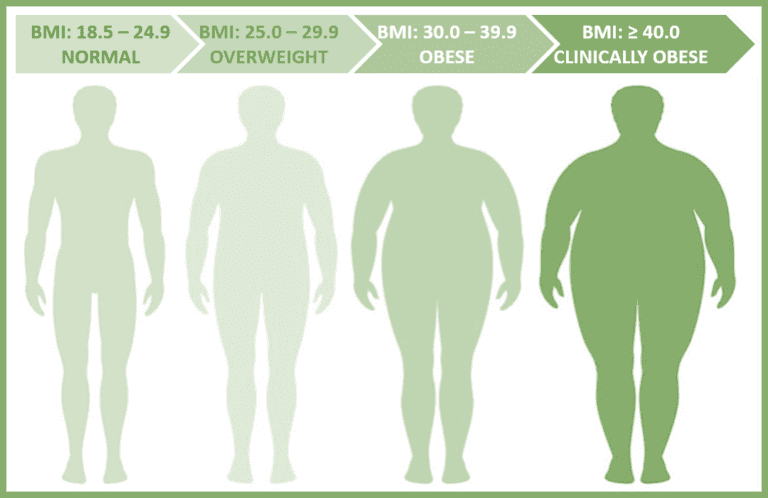Page Contents
Obesity is a preventable modern day condition. Obese people are more commonly seen in many developing and developed countries where the work environment is fast-pace, stressful, and mostly desk-bound.
Ironically, in the olden days, when living standards were not that ideal, where most jobs were labour-intensive, slower pace, and the food sources were scarce, obesity wasn’t a concern at all.
Trends and statistics
According to WHO statistics 2020, there are more than 1 billion people worldwide are obese. Among which, 650 million adults, 340 million adolescents and 39 million children. The number of obese population has tripled globally since 1975.
Generally, obesity incidence starts in the 20s and peaks at 40 to 59 years old, it gradually decreases after the age of 60 (possibly due to high mortality rate of chronic conditions). According to National Health and Nutrition Examination Survey (NHANES), 2017–2018 data shows that there are more than 2 in every 5 adults (42.4%) have obesity. About 1 in every 11 adults (9.2%) are clinically obese.
Sadly, there is an increasing trend of childhood obesity in recent years. The same statistics shows that almost 1 in 5 children and adolescents ages 2 to 19 (19.3%) are obese. While, about 1 in 16 (6.1%) have severe obesity (clinically obese).
Statistics also show that more than 1 in 3 men (34.1%) and more than 1 in 4 women (27.5%) are overweight. However, as the condition progresses, women have a higher prevalence of severe obesity than men.
What are the causes of obesity?
Obesity is a slow and gradual process that many fail to notice the changes in body weight at the beginning. By the time it is noticeable, you could have already used to some unhealthy habits and lifestyles. There are a few determinants that form the habits of what you eat and how you live your life.
- Diet: Eating high-calorie, high-fat foods and processed foods.
- Lifestyle: Sedentary, lack of exercise, sleep deprivation, and stress.
- Genetics: Family with history of obesity may carry the genetics for generations.
- Medication: Medications such as antidepressants, antipsychotics, anticonvulsants, steroids and so on, may lead to weight gain as a side effect.
- Hormone imbalances: Hormones that affects appetite and weight include insulin, glucagon, cortisol, etc.
- Environment: Food availability and accessibility, food choices, geographical and cultural factors.
What obesity leads to?
Studies show that many chronic conditions are closely correlated with obesity. However, the manifestation of these conditions actually took place at the stage of overweight.
Obesity can affect the heart, liver, kidneys, joints, reproductive system, etc., and subsequently lead to many noncommunicable diseases (NCDs) such as diabetes, heart diseases, hypertension, stroke, cancers, osteoarthritis, kidney dysfunction, lung problems, etc. Figure 1 summarises the chronic conditions that are caused by obesity.

How do you know if you are obese?
Body Mass Index (BMI) is a quick and simple way to determine if you are obese. You may indicate your weight and height into the link here to measure your BMI level.
As shown in Figure 2, there are 3 stages from overweight to clinically obese.
- If your BMI falls within 18.5 – 24.9, you are considered normal weight.
- When your BMI is between 25.0 – 29.9, you will be overweight.
- You will be categorised as obese if your BMI ranges from 30.0 – 39.9.
- Once your BMI hit 40.0 and above, you are under clinically obese.

How can you reverse obesity?
Obesity is not a non-reversible condition. Often, with the right diet and lifestyle modifications, you can reverse to normal weight or healthy BMI. For some whose BMI is at the extreme end (above 40.0), medical interventions may be more effective.
Diet modifications
- Consume a balanced, nutritious diet with more vegetables & fruits and reduced meat.
- Be mindful when eating your meals, do not overeat or eat unhealthily.
- Stop sweet foods (high glycemic index foods, pastries, desserts) and sweet beverages (carbonated drinks, sweetened coffee, bubble tea, etc.).
- Stay hydrated by drinking enough water.


Lifestyle changes
Aside diet modifications, lifestyle interventions are also essential in managing weight. These include:
- Maintain active lifestyle by moving more throughout the day and exercising regularly.
- Walk slowly instead of driving Personal Mobile Vehicle (PMV) if you are still ambulant.
- Get enough rest by maintaining healthy sleep cycle and managing stress.
- Exercise regularly with support groups.
- Get annual health screening to benchmark your current health condition.
- FDA-approved medicines such as orlistat, phentermine, and lorcaserin are the common medicines to treat obesity.
- Other interventions include bariatric surgery like gastric banding or sleeve gastrectomy are quite effective in controlling obesity.

Conclusion
Fast foods and instant foods are easily accessible nowadays. Make conscious choice to avoid these unhealthy foods and engage more activities over sedentary lifestyle. It is important not just keeping yourself at healthy BMI, helping your family especially children and elderly at healthy weight can reduce their chances of developing chronic conditions.
